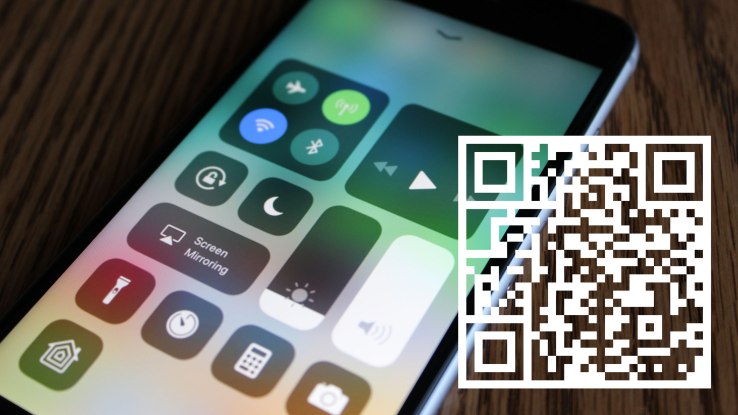iOS 11 is a second chance for QR codes and NFC to hit it big

Apple’s flashy new iPhones are hogging the spotlight right now, but iOS 11 is arriving before they do – on September 19, the major mobile software update will be available for existing iPhone and iPad devices. It’s bringing a lot of new features, especially to the iPad and iPad Pro, but it’s got two under-hyped payloads that could drastically change mobile apps, experiences and marketing.
Those two new features in iOS 11 are a native QR code reader built directly into the Camera app, and an expansion of the onboard NFC chip support to allow it to read NFC tags in the real world (previously, NFC was strictly limited to Apple Pay use). The iPhone 7 and above are required to use the NFC reading functionality, even though the iPhone 6 and 6s have NFC chips for Apple Pay, but it’s still a big deal for the short-range communication tech.
Why? Because both of these technologies offer ways to connect your mobile device with the real world. QR codes have been used to this end for a decade or more in many Asian markets, and remain tremendously popular. NFC has long been present in Android phones, and can enable a range of experiences including things like verifying that physical goods on sale are the real deal and not counterfeit, or even transmitting transit directions to a landmark when you wave your phone over a public information kiosk.
Both NFC and QR have run the gamut of the hype cycle – multiple times over, in fact. QR seemed like it was going to make its way to North American relevance around eight years ago, for instance, when tech started trying to copy the model they saw working so well in places like Japan with advanced cellular phones. And NFC has been overhyped, turned out a bust and then returned to modest success, all within the past half-decade or so.
QR codes have been declared “dead” repeatedly by analysts and tech media, but Apple building it into the iOS 11 camera (and enabling it by default, as they have done with pre-release builds including the current GM candidate) has the potential to resuscitate the tech and even make it mainstream in North America, even though all past efforts to do so have come to nought. It’s still an undoubtedly useful technology – there’s no other way to quickly and easily build the equivalent of ‘real world links’ into objects and signage.
NFC will have a steeper hill to climb, since Apple has decided to enable only reading of tags, and only on an app-by-app basis, which means app developers will have to build support into their own software to make it work. But it’s still a huge step forward for NFC adoption, and for its use scenarios similar to QR code’s usage.
Critics will complain that suggesting Apple’s adoption of this tech is actually late, and that many others came before them, without prompting any widespread mass market adoption. But it’s impossible to understate Apple’s role in promoting the proliferation of new technology into the mainstream, especially in North America. For proof, look no further than your bedside table the next time you stay in a hotel – chances are, if the alarm clock here has a charging dock, it’s a 30-pin from Apple’s previous iPhone connector tech.
QR codes and NFC could still be largely ignored by the majority of consumers, but Apple’s decision to make them more accessible in iOS 11 gives them a much better chance of finally living up to their hype, many years after their initial introduction.